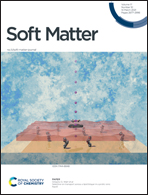Acoustic cavitation rheometry
Abstract
Characterization of soft materials is challenging due to their high compliance and the strain-rate dependence of their mechanical properties. The inertial microcavitation-based high strain-rate rheometry (IMR) method [Estrada et al., J. Mech. Phys. Solids, 2018, 112, 291–317] combines laser-induced cavitation measurements with a model for the bubble dynamics to measure local properties of polyacrylamide hydrogel under high strain-rates from 103 to 108 s−1. While promising, laser-induced cavitation involves plasma formation and optical breakdown during nucleation, a process that could alter local material properties before measurements are obtained. In the present study, we extend the IMR method to another means to generate cavitation, namely high-amplitude focused ultrasound, and apply the resulting acoustic-cavitation-based IMR to characterize the mechanical properties of agarose hydrogels. Material properties including viscosity, elastic constants, and a stress-free bubble radius are inferred from bubble radius histories in 0.3% and 1% agarose gels. An ensemble-based data assimilation is used to further help interpret the obtained estimates. The resulting parameter distributions are consistent with available measurements of agarose gel properties and with expected trends related to gel concentration and high strain-rate loading. Our findings demonstrate the utility of applying IMR and data assimilation methods with single-bubble acoustic cavitation data for measurement of viscoelastic properties.



 Please wait while we load your content...
Please wait while we load your content...